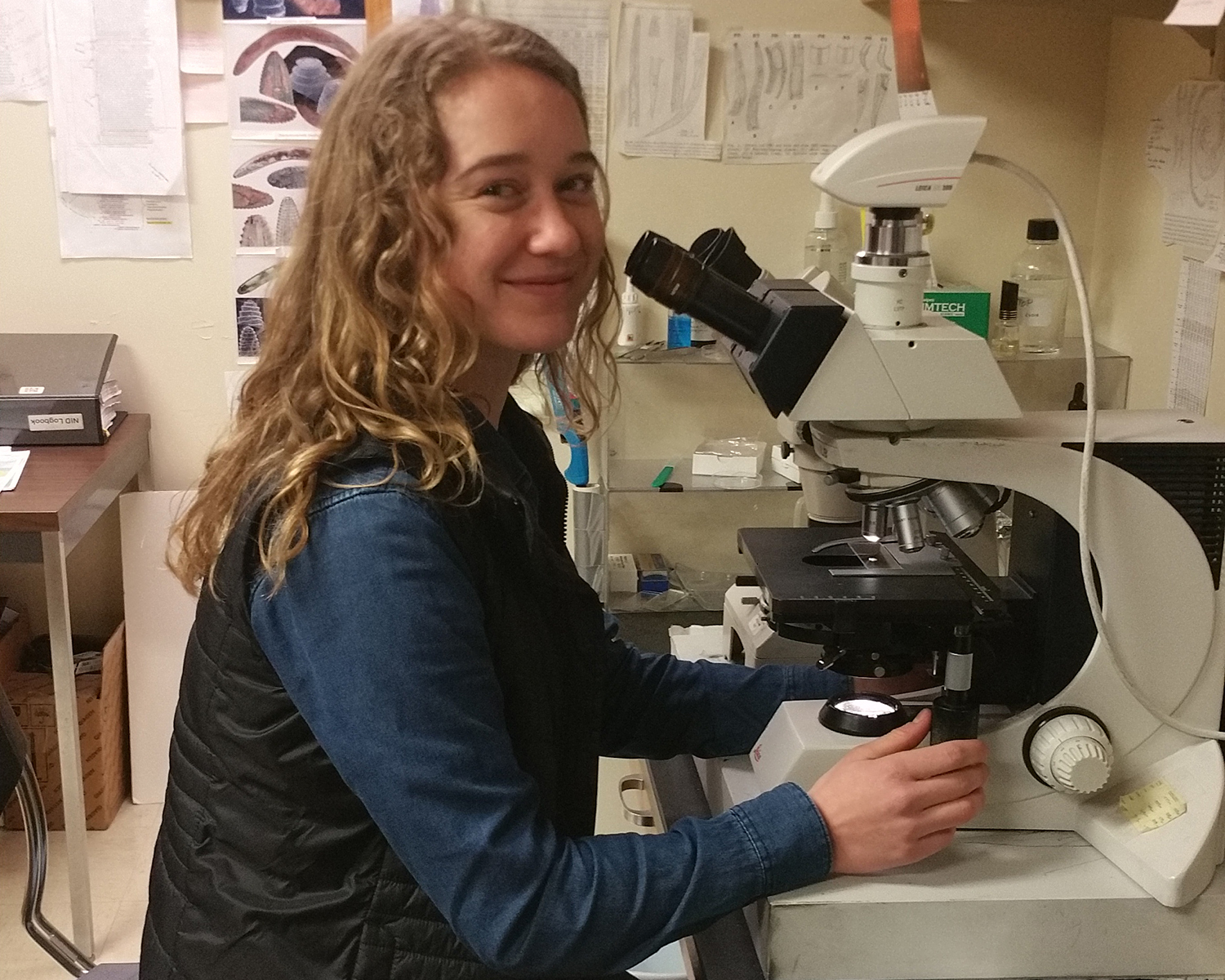
Abigail Borgmeier, a graduate student in the University of Nebraska-Lincoln’s Plant Pathology Department, is exploring the belowground diversity of nematodes – a type of roundworm – the most abundant animal on earth.
Microscopic nematodes have sometimes been referred to as the black box of biodiversity, and Borgmeier is one of the relatively few studying them in natural environments. Herbivorous nematodes feed on plant roots and enrich the soil by stimulating root exudates that support microbial population growth.
Borgmeier is conducting her research at the Prairie Corridor on Haines Branch, a swath of prairie undergoing restoration that eventually will connect south Lincoln to the Spring Creek Audubon Center near Denton. Tallgrass prairies, which make up the eastern most ecoregion in Nebraska, are home to a diverse ecosystem of plants and animals.
But Borgmeier’s research shows that view is only half the story.
“The below-ground ecosystem is just as important to the functioning and health of the prairie ecosystem as the above-ground biodiversity, but is often forgotten because it is not readily seen and measured,” Borgmeier said. “There really hasn’t been any comparable study or really looking at the below-ground community the way I am, especially in tallgrass prairies.”
The latest comparable study of nematodes was conducted 40 years at the Konza prairie in Kansas, which is the largest nematode community study Borgmeier is aware of.
Nematodes are associated with plants, and it is thought that a higher diversity of prairie plants will support a more diverse community of nematodes.
“Examining the nematode community is key to gaining a full understanding of prairie ecosystem functioning, and what factors influence the belowground biodiversity,” Borgmeier said.
Her research in the field started last summer, when she began sampling soil from fifteen 3-acre study sites within a 10-mile radius along the Prairie Corridor.
She then used fine sieves to separate the soil from the nematodes, which she counted, examined and identified.
This was no small task. In just handful of prairie soil, there can be hundreds of individual nematodes.
So far, Borgmeier has completed the community analysis under the microscope for eleven of the 15 plots and found differences in the ratios of trophic groups, or organisms within the same level in a food chain and eat the same thing, between study sites and the dominant nematode genus in each trophic group. These differences may reflect variations in the plant diversity among of her plots, and Borgmeier will conduct further analysis.
Borgmeier is barcoding, a high-resolution DNA analysis, on DNA extracted from 25 nematodes. DNA barcoding uses the COI gene to create an identifying DNA sequence of each nematode species.
She then takes the identified species and builds phylogenetic trees (diagrams representing evolutionary relationships between organisms) to identify species and species relationships. By doing this, she will create a reference database, which will help future identification of nematode species, as well as to trach evolutionary changes within the species.
All of the specimen from the Prairie Corridor in the phylogenetic tree are more genetically similar to each other than to the other specimens from other tallgrass prairies in the Midwest.
“I found that really interesting because it supports the idea that there is a lot of hidden genetic biodiversity within the prairies that goes beyond just seeing all the different wildflowers or grasses or mammals on the prairie ecosystems,” Borgmeier said.
Borgmeier’s co-advisor, UNL School of Natural Resources professor Dave Wedin, conducted a plant survey of each of the sites back in 2017. He documented all of the plant species in one-meter squares within the 3-acre plot. The past range management strategies of the 15 prairie study sites vary – some were grazed, for example and others were burned. The varying management strategies have resulted in very different plant communities, which in turn have impacted the nematode diversity Borgmeier is studying.
There are major links between the above-ground and below-ground diversity, one of them being through the soil food web. It is known that increased plant diversity is linked to increased nematode diversity. Nematode communities will be representative of plant communities and will reflect changes in plant species abundance.
The clearest trend Borgmeier has seen so far is that nematodes within the tallgrass prairie, specifically within the Prairie Corridor, are more genetically similar to each other.
Borgmeier says studying the nematode biodiversity and community structure can give insights into how the management has impacted the whole prairie ecosystem, not just the plant community. Overall, this study can help to inform future management decisions that work to protect all of the diversity on the prairie ecosystem, even the diversity that is more difficult to see and measure.
“Having the nematodes present in the soil may also help preserve those plant communities,” Borgmeier said. “I think that just having a greater knowledge of what a high-quality nematode community in a remnant tall grass prairie look like, and having that as the standard is just an important thing to note. The more people know, the more they are going to care.”
- Natalie Jones, IANR Media